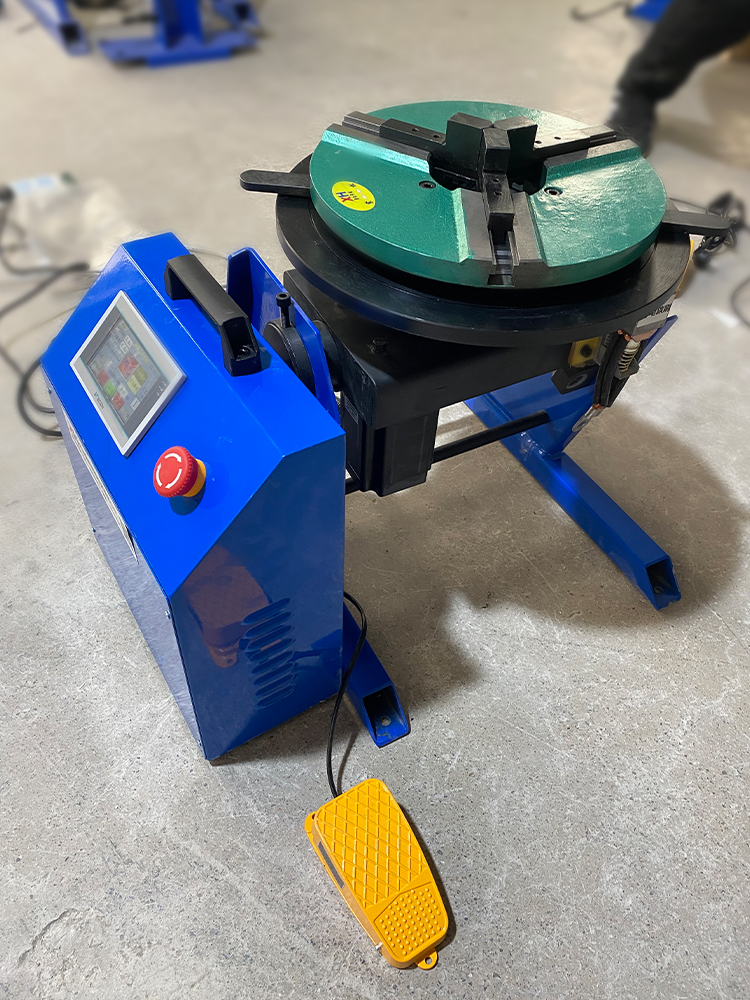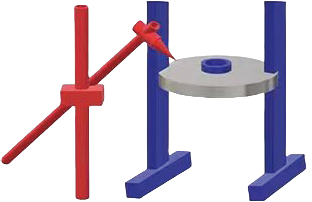I. Daily Maintenance (Before and After Daily Operations)
Cleaning and Inspection
- Remove welding slag, spatter, oil stains and dust from the surface of the equipment, especially key parts such as the rotating mechanism and guide rails, to prevent debris from jamming and affecting motion accuracy.
- Check whether cables and air pipes are damaged or aged, and whether the joints are loose, to ensure normal power supply and air supply.
Inspection of Moving Parts
- Observe whether the movement of each rotating shaft and turning mechanism is stable, and whether there are abnormal noises, jams or deviations.
- Check whether the limit devices (such as travel switches, photoelectric sensors) are sensitive and reliable to avoid equipment damage caused by overtravel operation.
Lubrication Supplement
- Add lubricating oil or grease (such as butter, machine oil) to the friction parts such as bearings, gears and guide rails according to the instructions to ensure smooth movement and reduce wear.
II. Regular Maintenance (Weekly / Monthly / Quarterly, Adjust According to Usage Frequency)
Maintenance of Mechanical Structure
- Fastening connectors: Check whether fasteners such as bolts, nuts and pins are loose, especially the parts affected by vibration during welding (such as the connection between the workbench and the rotating body, the motor fixing seat), and tighten them in time.
- Maintenance of gears and chains: If the equipment adopts gear or chain transmission, it is necessary to regularly clean the debris between teeth or chain links, check the wear of tooth surfaces and the tightness of chains, and adjust the tensioning device or replace spare parts if necessary.
- Maintenance of guide rails: Wipe the surface of the guide rails and apply anti-rust oil to prevent rust; check the parallelism and straightness of the guide rails, and adjust them in time if there is any deviation.
Maintenance of Drive System
- Motor inspection: Clean the surface of the motor, check whether the terminal blocks are overheated or oxidized, and whether the bearings have abnormal noises; measure the insulation resistance of the motor to ensure it meets safety standards (generally ≥0.5MΩ).
- Reducer maintenance: Check the oil level of the reducer, and add the same type of gear oil when it is insufficient; if oil leakage is found, replace the seals (such as oil seals) in time and clean the leaked oil stains.
Maintenance of Electrical System
- Open the electrical control cabinet, remove internal dust and debris, check whether the contacts of contactors and relays are ablated, and grind or replace them in time if they are worn.
- Check whether the wiring of control components such as PLC and servo drivers is firm, whether the indicator lights are normal, and detect their operating parameters with special equipment if necessary.
Maintenance of Hydraulic / Pneumatic System (For Positioners with Hydraulic / Pneumatic Drive)
- Hydraulic system: Check the oil level of the oil tank, replace the hydraulic oil regularly (generally once every 6-12 months), and clean the filter; check whether the oil pipes and hydraulic valves are leaking, and whether the oil cylinder moves smoothly, and replace the seals if necessary.
- Pneumatic system: Drain water (open the drain valve of the air storage tank or filter to discharge condensed water); check the working status of the pressure reducing valve and solenoid valve, and clean the impurities in the pneumatic components to prevent air circuit blockage.
III. Maintenance for Long-Term Shutdown
If the equipment needs to be shut down for a long time (more than 1 month), the following work should be done:
- Thoroughly clean the surface and interior of the equipment, and apply anti-rust paint or anti-rust oil to all exposed metal parts.
- Place each moving axis in the “zero position” or a safe position to avoid deformation of parts due to force.
- Disconnect the power supply and air source, remove the cables and air pipes and store them properly, and place desiccants in the control cabinet to prevent moisture.
- Cover with a dust cover to prevent dust and debris from entering the equipment.
IV. Common Fault Handling and Precautions
- Principles for fault handling: When abnormal equipment is found, stop the machine immediately for inspection, and it is forbidden to operate with faults; simple faults (such as looseness, lack of oil) can be handled by yourself, and complex faults (such as motor burnout, control system failure) need to contact professional maintenance personnel.
- Safety precautions: The power supply must be cut off during maintenance, and a “No Switching On” sign must be hung; safety belts must be worn for high-altitude operations (such as checking the top of the turning mechanism); when using flammable substances such as lubricating oil and cleaning agents, keep away from fire sources.



